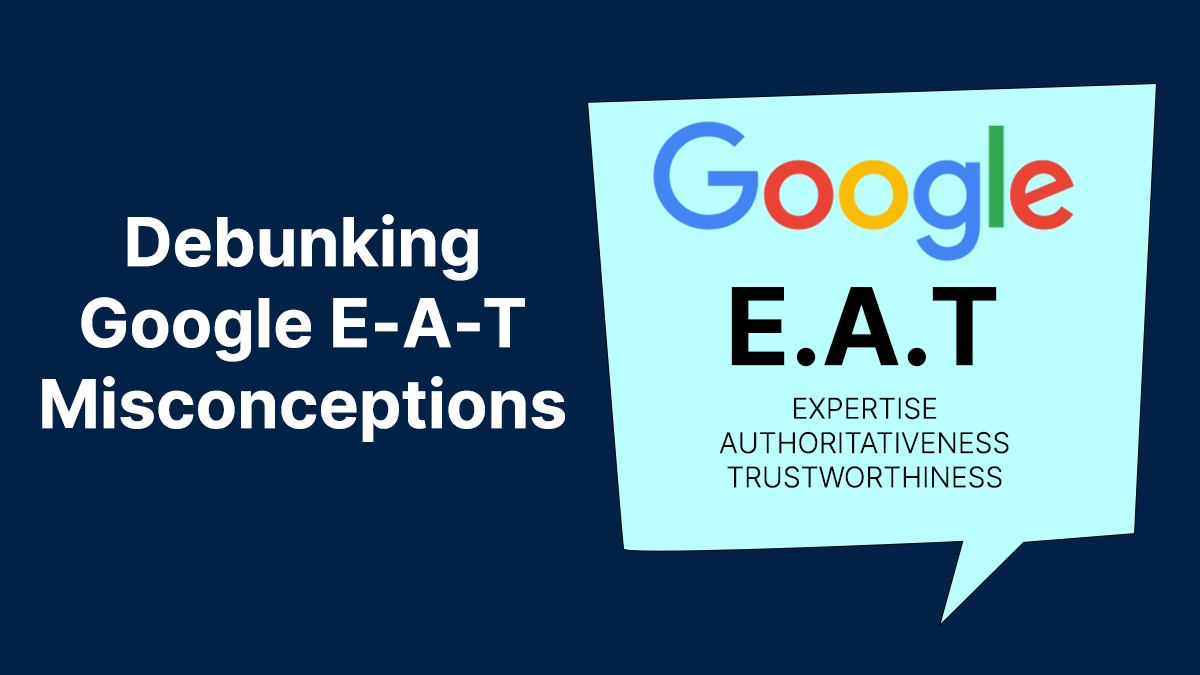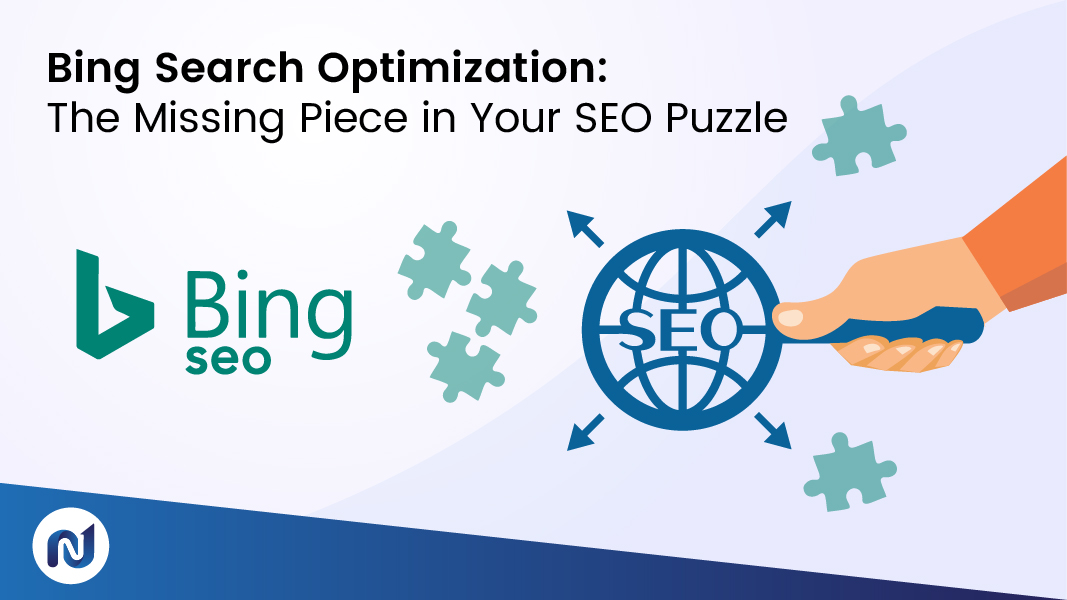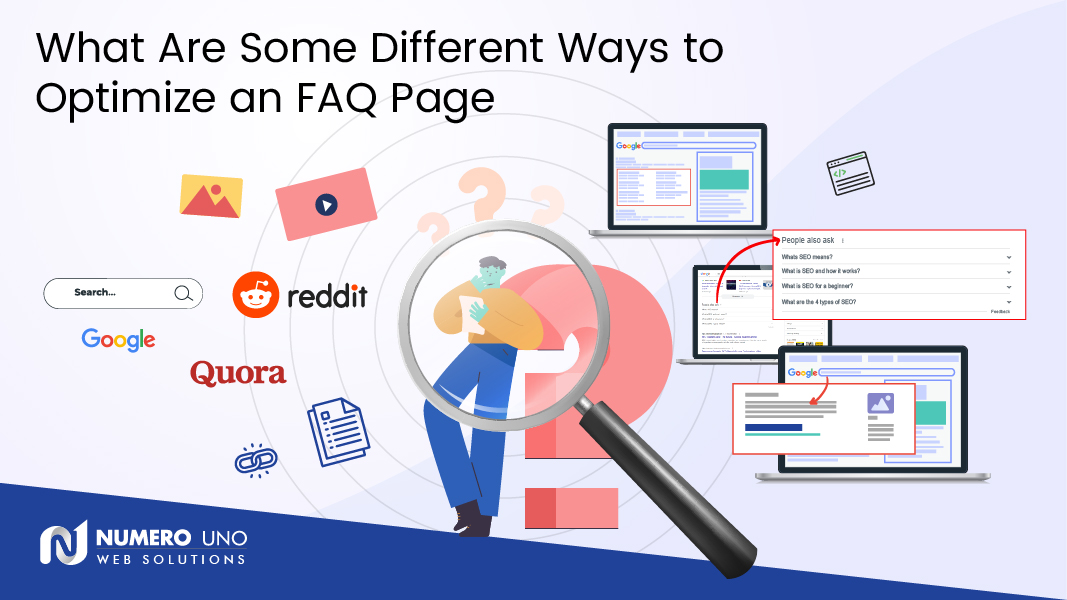
Google has been using E-A-T (Expertise, Authoritativeness, and Trustworthiness) criteria as a means and guideline to evaluate search quality and related content since 2014. The purpose of E-A-T is to identify and distinguish high-quality content that pertains to specific search queries. Over the years, Google has become increasingly strict with the type of content that websites are allowed to produce. Search query results are becoming increasingly specialized to ensure the quality of the responses yield favourable and useful answers for users. Unfortunately, there are still a lot of misconceptions about how Google search engine E-A-T works and the role that search engine optimization (SEO) and digital marketing play.
In this article, we’ve identified and debunked the top Google E-A-T misconceptions to help you better understand the main concept behind Google’s Search Quality Guidelines and how they impact SEO.
What Is Google E-A-T?
Google E-A-T stands for Expertise, Authoritativeness, and Trustworthiness. Essentially, this is Google’s version of deploying quality assurance methods to ensure that the content they present in response to search queries meets a certain high standard or criteria. Google dispatches thousands of reviewers to assess the quality of the content across every website in existence to identify inaccuracies, inconsistencies, and false information in search quality, intent, and the information being presented. This goal is to improve user experiences across the board and guarantee that all search results come from qualified and expert resources.
Websites that violate the Google Search Quality Guidelines, which are regularly updated, will be penalized by Google in different ways. Google always makes sure that the punishment fits the crime. Penalties typically result in less online visibility and fewer ranking opportunities, which renders your digital marketing efforts futile.
What Are Some E-A-T Misconceptions?
E-A-T has been a major topic of discussion amongst digital marketers and SEOs since it was first introduced. Over the years, a few prominent Google E-A-T and marketing misconceptions have arisen, causing a lot of confusion about what they are and how they work in the industry. Here are some of the most common Google E-A-T misconceptions with an explanation as to why they’re inaccurate.
Misconception: E-A-T Isn’t an Algorithm
There’s actually some truth to this one. E-A-T is a concept, not an algorithm on its own. E-A-T is, however, comprised of thousands of miniature algorithms that are used to assess content quality on all websites. Think of E-A-T as a photo mosaic. It’s made up of countless algorithms that come together to create a bigger picture.
Misconception: E-A-T Has No Bearing on Page Rankings
E-A-T can certainly indirectly impact your rankings. Content optimization isn’t just about stuffing as many keywords into your articles and blog posts. In fact, that’s highly discouraged and something you could get penalized for by Google. The quality of your content and whether or not it actively addresses the main concerns and questions related to your industry and business in particular matters. That’s where E-A-T assessments can either help or hurt your website. Use your content and digital marketing initiatives to establish your brand as an industry-wide authority figure to make a name for yourself and grow your business.
Including featured snippets in your content schema is a great way to get noticed and increase your visibility on Google’s search engine.
Misconception: E-A-T Employs a Scoring System
E-A-T doesn’t have an outright scoring system that can impact your Google search engine rankings one way or the other. Content quality reviewers aren’t tasked with rating websites. All they can do is review the quality of the content on your website for accuracy to determine your organization’s standing as an industry expert and authority. They also analyze the trustworthiness of your sources to ensure that they’re reputable and reliable. Signals across your website indicate the quality of your on- and off-page content and sometimes, that can indirectly impact your search rankings for better or worse.
Misconception: E-A-T Is a Direct Ranking Factor
E-A-T isn’t a direct ranking factor for your website. Instead, it embodies a number of ranking factors that impact the positioning of your content on SERPs. What that means is that E-A-T signals the technical and content-related changes, corrections, and improvements that you need to work in order to improve your rankings. The implementation of these updates is what directly impacts your rankability, whereas E-A-T simply defines what those necessary updates are and how they should be implemented.
Misconception: Every Website Needs to Focus on E-A-T
As per Google’s Search Quality Guidelines, not all websites need to focus equally heavily on E-A-T standards. That’s not to say that you shouldn’t strive to present your users and readers with as much accurate industry-related information as possible and it’s certainly not giving the greenlight to endorse or display false information. It just means that certain websites that produce and share specific types of information are held to a much higher standard than say online retailers or hobby bloggers.
Websites categorized as YMYL (Your Money, Your Life) that provide financial or medical data and advice, for instance, are certainly more likely to be impacted by E-A-T guidelines because of the nature of the topics they convey. These types of websites and the content they produce should only be managed by creators with a high level of expertise and authority in their fields to garner high levels of trustworthiness.
Misconception: E-A-T Negates the Need for Technical SEO
As we’ve already established, E-A-T isn’t an adequate replacement for technical SEO and digital marketing strategies for your website. Making improvements on your website can certainly impact your rankings to some degree, but optimization is the key to boosting your online visibility. Performing regular website audits allows you to identify inefficiencies and where improvements need to be made. E-A-T is just one of many areas included in SEO that you should employ to improve your content quality, rankability, and above all, the capacity for Google to crawl and index your website.
Misconception: E-A-T Is an Overnight Solution
Addressing E-A-T is certainly an important aspect of website maintenance for YMYL organizations, but it doesn’t cover the whole picture and it’s certainly not equally relevant for rankings across the board. Since E-A-T isn’t a direct ranking factor, it won’t necessarily impact your SERP positioning, especially if there are larger SEO kinks such as technical site errors that need to be worked out. E-A-T is a long-haul solution and seeing results from it will take some time because you have to build up user trust and establish your brand or organization as an industry authority first.
Professional Search Engine Optimization (SEO) in Toronto
At Numero Uno Web Solutions we specialize in providing our clients with custom-tailored digital marketing solutions that help improve their organic or paid search rankings. From quality content creation to website maintenance and online reputation management, our expertise covers a wide range of areas involved in SEO. Contact us today to learn more.



